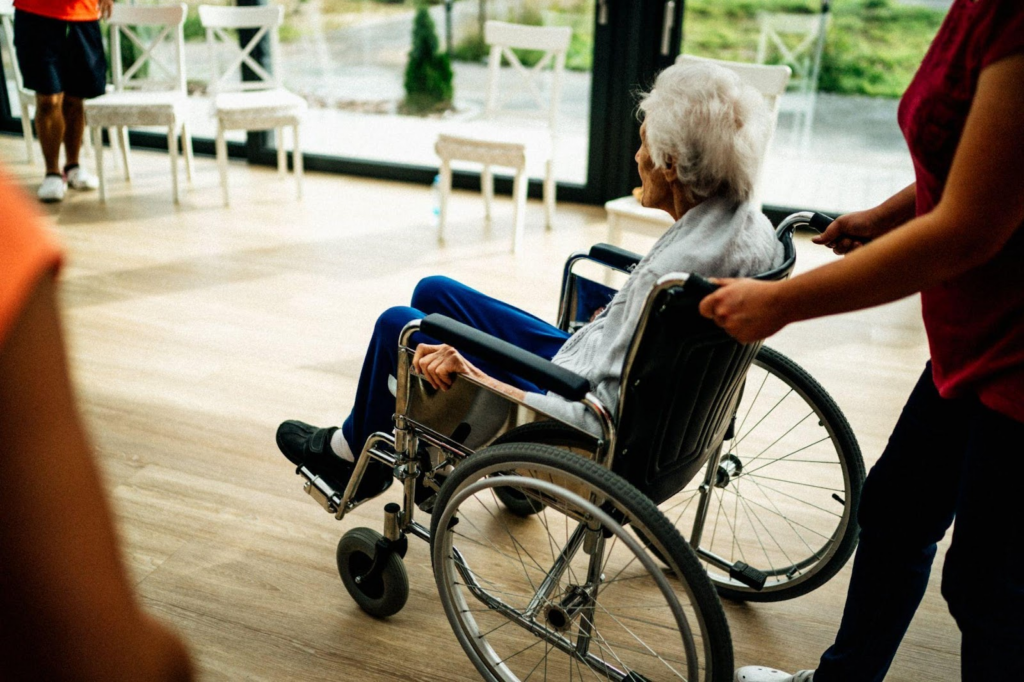Imagine a world where no one cares for anyone else. It’s a bleak picture, isn’t it?
Now, consider the reverse: a society where everyone cares for someone else in some way.
Suddenly, the world is brighter, warmer, and more compassionate. This is the world we live in, thanks to the countless caregivers in our communities.
Caregiving is an essential part of our social fabric that touches everyone at some point in their lives.
However, caregiving isn’t one-size-fits-all. It’s a broad spectrum that encompasses various roles, responsibilities, and levels of commitment.
Understanding these distinct forms of caregiving is vital, particularly for those interested in this noble vocation.
Family Caregiving

While it is one of the most common forms of caregiving, family caregiving is often neglected. Some people instantly expect that they will provide caregiving duties only because they’re a family member.
It involves providing home care services to the elderly, who can be a family or a friend. In most cases, it’s an unpaid work.
This assistance can range from simple daily tasks like cooking and cleaning to more intensive care such as administering medication or aiding with physical therapy.
Family caregivers form a significant part of the backbone of long-term care worldwide. Their presence provides emotional support and a familiar environment that greatly enhances the quality of care.
However, like all heroes, they face their battles, grappling with challenges like stress and balancing caregiving with other responsibilities.
In fact, due to the often continuous and demanding nature of the role, family caregivers are at risk of physical and emotional fatigue, which makes resources for support and relief vital for their well-being and the effectiveness of the care they provide.
Providing adequate support and education for these caregivers can go a long way in addressing these challenges.
Professional Caregiving
Professional caregiving is a career path that demands a considerable level of skill and knowledge. These caregivers are trained individuals who provide care services, often hired through an agency or healthcare facility.
The services they provide are vast, from aiding with personal care routines to creating personalized care plans, all in a bid to enhance the well-being and independence of those they care for.
One of the notable aspects of professional caregiving is the need for formal certification, showcasing proficiency in various aspects of caregiving.
Aspiring caregivers often undertake examinations to acquire certification. To increase the chances of getting certified, one could take practice exams at PracticeCNATest.com. It provides the perfect opportunity to prepare for the test.
Further, continuous learning is an essential component of professional caregiving. Caregivers must keep abreast with industry practices and updates to continue providing top-notch services to their clients.
Informal Caregiving
Informal caregiving, provided by friends, neighbors, or community members without formal training or compensation, is an often overlooked form of caregiving. These caregivers fill gaps in care, providing much-needed support in their communities.
Despite their critical role, informal caregivers often fly under the radar. They have immense contributions to the well-being of local communities.
These caregivers act as a safety net for vulnerable individuals who may not have access to other forms of care.
Their flexible, responsive approach to care can be a lifeline in crisis situations or when formal services are unavailable or inadequate.
However, while their roles are crucial, informal caregivers can often find themselves facing challenges similar to those experienced by family caregivers. The lack of formal training and resources can lead to stress and uncertainty.
Therefore, societies should make more of an effort to recognize and support these hidden heroes, providing them with resources to educate themselves and make their responsibilities more manageable.
Private-Duty Caregiving
Private-duty caregiving involves paid caregivers, often nurses or nurse aides, directly hired by individuals or families. These caregivers provide a range of services from health-related care to companion services.
The personalized nature of private-duty caregiving often fosters strong caregiver-client relationships, enabling more customized care.
Despite the benefits, private-duty caregivers face unique challenges, such as managing their professional boundaries and continuously updating their skills to meet their client’s specific needs.
Volunteer Caregiving

Volunteer caregivers are an incredible group of individuals who offer their time and skills free of charge.
They often serve through organized programs or community initiatives. Their primary role is to support those with limited access to care, thus playing a significant role in enriching their communities.
Volunteer caregivers often provide compassionate assistance and companionship, filling in care gaps where they’re most needed.
They prove that a sense of community and selflessness can significantly impact the lives of those who need care.
Conclusion
Caregiving takes many forms, each with its unique characteristics and challenges. Regardless of the type of caregiving, continuous learning, improvement, and the drive to provide the best possible care are vital elements.
By recognizing and appreciating the varied roles of caregivers in our society, we can support them in their work, ultimately fostering a healthier, more caring community.

Jean Smith is a fitness enthusiast and blogger who focuses on fitness and a healthy lifestyle. She is passionate about assisting people in living healthier lifestyles and is constantly on the lookout for new and creative methods to stay fit and healthy. Her articles are excellent resources for anyone interested in improving their health and fitness.
